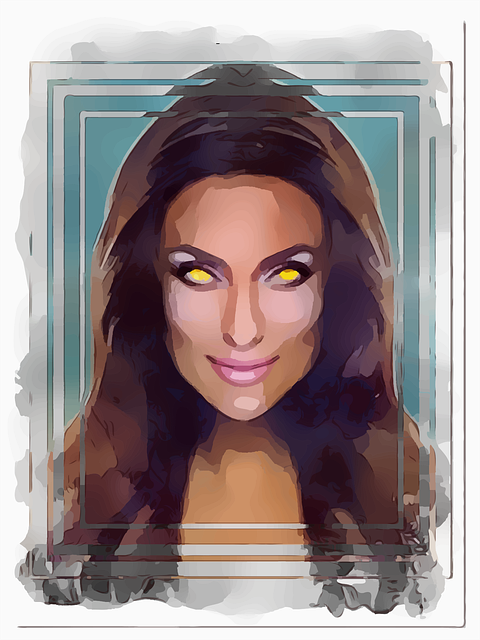 Submitted by Olivia on
Submitted by Olivia on

Image by Ed Zilch from http://Pixabay.com
Was it strictly a case of mulltiple personaity disorder or something else?
Doris Fischer case One of the notable cases of spirit Possession investigated by James H. Hyslop, a psychical researcher and an early president of the American Society for Psychical Research (ASPR).
The case of Doris Fischer, whose real name was Brittia L. Fritschle, was first reported by Walter Franklin Prince, an Episcopal minister and psychologist. Fischer suffered an extreme traumatic incident as a child at the hands of her abusive and alcoholic father, and had exhibited multiple personalities since she was three in 1892. She also displayed striking psychic tendencies and was able to foresee her mother’s sudden illness and death. Fischer and her siblings continued to live with their father, but she retreated more and more into the personalities of “sick Doris” and the wicked “Margaret.” Fischer was eventually adopted by Prince and his wife. Prince was familiar with the newly recognized syndrome of multiple personality, and he and his wife helped Fischer to regain some normalcy.
Hyslop became involved in the case in 1914. For years, he had postulated that some psychotic states were caused—or at least aggravated—by spirit influence. Although not a Spiritualist per se, Hyslop sympathized with the cult’s psychic “cures” and believed that spiritual communication was just as important as physiological therapy. With that in mind, Hyslop took Fischer to sit with medium Minnie Meserve Soule, hoping to find and eliminate the possessive spirits who were destroying the girl’s peace of mind.
During the Séances, Soule communicated lengthy messages to Fischer from her mother. The Medium also heard from the spirit of Count Cagliostro. Hyslop did not like Cagliostro’s presence and encouraged him to leave the Séances and Fischer. Later researchers speculate that “Cagliostro” represented sexual mores that both Hyslop and Fischer suppressed but secretly desired.
Next, Soule heard from the spirit of Richard Hodgson, a former leading member of the ASPR and the Society for Psychical Research (SPR), who confirmed Hyslop’s suspicions of spirit influence and promised to help all he could. Finally, Soule received messages from a young Indian spirit calling herself “Minnehaha,” or “Laughing Water.” Hyslop was skeptical of such a spirit, since Minnehaha is the heroine of Henry Wadsworth Longfellow’s poem Hiawatha. But he went along, impressed with Minnehaha’s knowledge of Fischer’s case and her claims that she had caused many of Doris’s problems. After further communications, Hyslop came to believe that the personality “Margaret” was not an offshoot of Doris’s mind but a possessing spirit herself.
Hyslop asked why spirits hurt Fischer, and was told by Soule’s communicators that they were evil influences. The controls also told Hyslop that Fischer’s case was no different from hundreds of other instances of insanity and multiple personality that could easily be cured through psychic exorcism. By 1915, Hyslop was convinced that Fischer was possessed, and he wrote of his experiences with her in his book, Life After Death (1918).
Hyslop believed that Cagliostro was the leader of Fischer’s possessing spirits, and he exorcised the count. Whatever other spirits remained were ineffectual, and Hyslop quit the case in the hopes that Fischer had been cured. She returned with the Princes to California and resumed a normal life for a while. But she never recovered, finally dying in a mental hospital after years of dealing with her various personalities and psychic disturbances.
The Fischer case was Hyslop’s last major investigation, although he never lost interest in the possibility of spirit possession. He reportedly believed his health had been threatened in 1919 by a spirit he was trying to exorcise through sessions in Boston with Soule, and he was ill for several months. He believed that the existence of discarnate spirits had been proved scientifically, and he dismissed those who did not agree.
Doris Fischer obsession
Case of spirit Oppression investigated by the psychical researcher JAMES HERVEY HYSLOP.
In 1914, Hyslop became involved in the case of Doris Fischer, whose real name was Brittia L. Fritschle. The case was first reported by Dr. W. Franklin Prince, an Episcopal minister and psychologist. Fischer suffered an extreme traumatic incident as a child at the hands of her abusive and alcoholic father and had exhibited multiple personalities since she was three in 1892. She also displayed striking psychic tendencies, able to foresee her mother’s sudden illness and death. Fischer and her siblings continued to live with their father, but she retreated more and more into the personalities of “sick Doris” and the wicked “Margaret.” Fischer was eventually adopted by Prince and his wife. Prince was familiar with the newly recognized syndrome of multiple personality, and he and his wife helped Fischer to regain some normalcy. For years, Hyslop had postulated that some psychotic states were caused—or at least aggravated—by spirit influence. Although not a spiritualist per se, Hyslop sympathized with the cult’s psychic “cures” and believed that spiritual communication was just as important as physiological therapy. With that in mind, Hyslop took Fischer to sit with a medium, Minnie Soule, hoping to find and eliminate the possessive spirits who were destroying the girl’s peace of mind.
During the Séances, Soule communicated lengthy messages to Fischer from her mother. The medium also heard from Count Cagliostro. Hyslop did not like Cagliostro’s presence and encouraged him to leave the Séances and Fischer. Later researchers speculate that Cagliostro represented sexual mores that both Hyslop and Fischer suppressed but secretly desired.
Next, Soule heard from the spirit of Richard Hodgson, who confirmed Hyslop’s suspicions of spirit influence and promised to help all he could. Finally, Soule received messages from a young Indian spirit calling herself “Minnehaha,” or “Laughing Water.” Hyslop was skeptical of such a spirit, since Minnehaha is the heroine of Henry Wadsworth Longfellow’s poem “Hiawatha.” But he went along, impressed with Minnehaha’s knowledge of Fischer’s case and her claims that she had caused many of Doris’ problems. After further communications, Hyslop began to believe that the personality “Margaret” was not an offshoot of Doris’ mind but a possessing spirit herself.
Hyslop asked why these spirits hurt Fischer and was told by Soule’s communicators that they were evil influences. The controls also told Hyslop that Fischer’s case was no different from hundreds of other instances of insanity and multiple personality that could easily be cured through psychic exorcism. By 1915, Hyslop was convinced that Fischer was possessed, and he wrote of his experiences with her in his last book, Life after Death (1918). Hyslop believed that Cagliostro was leader of Fischer’s possessing spirits, and he exorcized the count. Whatever other spirits remained were ineffectual, and Hyslop quit the case in the hope that Fischer had been cured. She returned with the Princes to California and resumed a normal life for a while. But she never recovered, finally dying in a mental hospital after years of dealing with her various personalities and psychic disturbances. The Fischer case was Hyslop’s last major investigation, although he never lost interest in the possibility of spirit obsession.
https://occult-world.com/doris-fischer-case/
Discover the Multiple Personaluty case here: https://oregondigital.org/sets/dissociation/oregondigital:df670h05c#page/1/mode/1up
- 833 reads